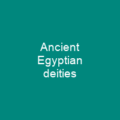Funerary Art: A Timeless Reflection of Human Mortality
Imagine a world where every culture, from the ancient Egyptians to modern-day societies, has its unique way of honoring the dead. Funerary art is more than just a collection of objects and monuments; it’s a profound expression of human emotion, cultural identity, and our eternal quest for meaning in life and death.
The Universal Language of Art
Funerary art serves as a universal language that transcends time and geography. From the elaborate tombs of ancient Egypt to the humble graves of rural China, these works speak volumes about the societies they represent. They are not just memorials but also windows into the past, revealing the beliefs, values, and daily lives of those who lived long ago.
From Ancient Times to Modern Day
Let’s take a journey through history. In ancient Egypt, funerary art was intricately linked with the belief in an afterlife. The famous Tomb of Tutankhamun, filled with treasures and artifacts, is just one example of how Egyptians prepared for their eternal journey. Similarly, the Terracotta Army in China offers a glimpse into the grandeur and complexity of Chinese imperial tombs.
The Role of Art in Commemoration
Art has always played a crucial role in commemorating the dead. Whether it’s the Mausoleum of Halicarnassus, one of the Seven Wonders of the Ancient World, or the simple yet poignant Hatchments used by Puritans in colonial America, these works serve as a reminder of our shared humanity and the inevitability of death.
The Evolution of Funerary Art
Over time, funerary art has evolved to reflect changing cultural norms and artistic styles. From the classical Greek kouros statues to the modernist Judenplatz Holocaust Memorial, each piece tells a story about its era. The Tomb of Jahangir in India, with its intricate tilework and geometric patterns, stands as a testament to the enduring beauty of Islamic funerary art.
The Future of Funerary Art
As we move forward, what will be the future of funerary art? Will it continue to evolve with contemporary styles or remain rooted in traditional forms? One thing is certain: as long as humans exist, there will always be a need for art that honors and remembers those who have passed.
Conclusion
In the end, funerary art is not just about death; it’s about life. It’s a celebration of human creativity, resilience, and our unending quest to understand what lies beyond this world. As we continue to create and appreciate these works, let us remember that each piece tells a story—a story of love, loss, and the enduring power of art.

You want to know more about Funerary art?
This page is based on the article Funerary art published in Wikipedia (retrieved on November 29, 2024) and was automatically summarized using artificial intelligence.







